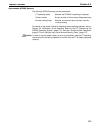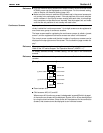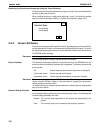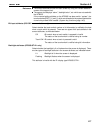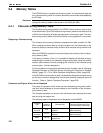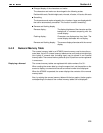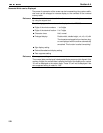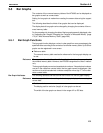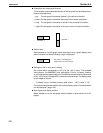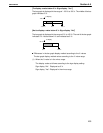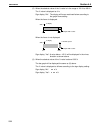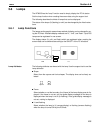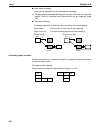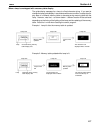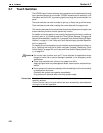
Reference
Reference
Section 4-5
5-5 Bar Graphs
The contents of the numeral memory tables of the NT600S can be displayed as
bar graphs as well as numeral data.
Setting for bar graphs is made when creating the screen data using the support
tool.
The following describes the kinds of bar graphs that can be displayed.
The display data of bar graph can be changed by changing the contents of the nu-
meral memory table.
For the procedure for changingthe data of the bar graph presently displayed, refer
to “Upgrading Bar Graphs (Changing the Contents of Allocated Words)” (page
179) or “Write Numeral Memory Table” (page 209).
5-5-1 Bar Graph Functions
The bar graph function displays a value in a bar graph form as a percentage to the
specified value according to the contents of a numeral memory table. Up to 50 bar
graphs can be registered in one screen.
Reference table
The numeral memory table used as the reference for the bar graph display can
be set.
The support tool has the “direct” and “indirect” options for thereference method of
the numeral memory table. However, the NT600S recognizes the “direct” method
only.
The bar graph display cannot usehexadecimal numbers. If hexadecimal numbers
are set in the reference numeral table, the bar graph cannot be displayed. Use
caution not to write hexadecimal numbers except the minus sign “F” to the refer-
ence numeral table.
Bar Graph Attributes The following attributes can be set with the NT600S for the bar graph display:
Use the support tool to make settings for the bar graph display when creating the
screen data.
Position and size
The display position and size (length) of a bar graph can be set.
The width of the bar graph can be set in the range of 2 to 255 dots.



